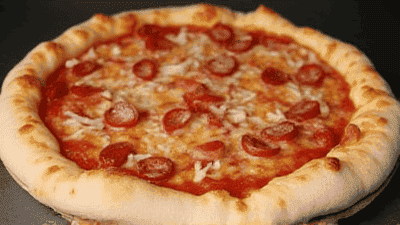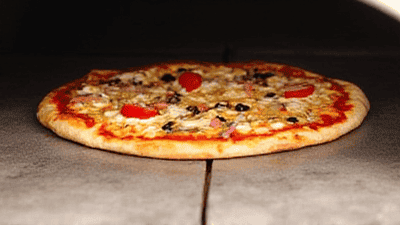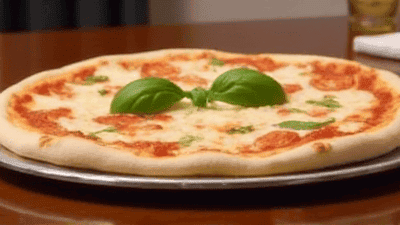
Pizza is one of the most beloved and versatile foods worldwide, cherished for its endless topping options and comforting flavors. While many people enjoy ordering pizza from their favorite pizzerias, making restaurant-style pizza at home can be a rewarding culinary experience. Not only can you customize every aspect of your pizza, but you can also achieve restaurant-quality results in your very own oven.
To create an exceptional pizza, it is essential to understand its components: the dough, sauce, cheese, and toppings. Each element plays a crucial role in achieving that authentic restaurant-style flavor and texture.
Pizza Dough: The foundation of any great pizza begins with the dough. The ideal dough is chewy, crispy, and has a flavorful crust. The leavening process, which involves yeast, contributes to the texture.
Pizza Sauce: A well-seasoned sauce is vital for adding flavor to your pizza. Classic marinara, zesty tomato sauce, or even pesto can serve as a base.
Cheese: Mozzarella is the most commonly used cheese for pizza, providing a delicious melt and stretch. However, blending other cheeses like provolone, Parmesan, or ricotta can elevate the flavor profile.
Toppings: The topping possibilities are virtually endless. Whether you prefer traditional toppings like pepperoni and mushrooms or gourmet options like prosciutto and arugula, the choice is yours.
Different regions and cultures have their unique styles of pizza, and understanding these styles can help you create your perfect pie:
Neapolitan: Known for its thin crust, Neapolitan pizza is characterized by its simplicity, often topped with just tomatoes, mozzarella, fresh basil, and a drizzle of olive oil.
New York Style: Famous for its foldable slices and crispy yet chewy crust, New York-style pizza typically features a layer of tomato sauce and mozzarella cheese, with various toppings available.
Chicago Deep-Dish: With its thick, buttery crust and layered toppings, Chicago deep-dish pizza is baked in a deep pan and often features cheese directly on the bottom, followed by toppings and sauce.
Sicilian: This style features a thick, rectangular crust and is typically topped with a rich tomato sauce, cheese, and assorted toppings.

Having the right tools can make a significant difference in the quality of your homemade pizza. Here are some essential tools you will need:
A pizza stone or steel is foundational for achieving a crispy crust. Both options retain and evenly distribute heat, simulating the conditions of a traditional pizza oven. If you can, choose a stone or steel with a thickness of at least half an inch for optimal results.
A pizza peel is a flat, shovel-like tool used to transfer your pizza to and from the oven. It helps prevent burns and ensures a smooth transition when baking.
A rolling pin is essential for stretching and shaping your dough. If you prefer a hand-stretched method, you might omit this tool, but it's useful for getting an even thickness.
Having a few mixing bowls of different sizes allows you to prepare the dough, mix ingredients for the sauce, and assemble toppings efficiently.
For precision in measuring ingredients, particularly flour and water when making dough, a kitchen scale can make a difference in consistency.
An infrared thermometer can measure the temperature of your pizza stone or steel, ensuring it has reached the optimal baking temperature when you are ready to cook.
A pastry brush is handy for brushing oil or sauces on the crust before or after baking, adding flavor and helping achieve a perfect finish.
The heart of a great pizza lies in the dough. Here is a classic recipe to get you started:
Step 1: Activate the Yeast
Step 2: Mix the Ingredients
Step 3: Knead the Dough
Step 4: First Rise
Step 5: Shape the Dough

A flavorful sauce is essential for enhancing the overall pizza experience. Here's a simple marinara sauce recipe:
Step 1: Prepare the Tomatoes
Step 2: Sauté Garlic
Step 3: Combine Ingredients

Utilizing fresh, high-quality ingredients will have a noticeable impact on the flavor of your pizza. Look for artisanal cheeses, high-quality canned tomatoes for the sauce, and fresh herbs.
For added flavor and texture, consider experimenting with different types of flour, such as bread flour or Italian "00" flour. These options can enhance the chewiness and aroma of the crust.
To achieve a puffier crust, consider placing a pan of water in the oven while the pizza is baking. The steam will create a humid environment, promoting better crust development.
To ensure even cooking, rotate the pizza halfway through the baking time. This is especially important if your oven has hot spots.
After removing the pizza from the oven, let it cool for a few minutes before slicing. This allows the cheese to set slightly and makes it easier to cut.
If you happen to have leftover pizza, proper storage and reheating techniques can help maintain its flavor and texture.
Making restaurant-style pizza in your own oven is an enjoyable and rewarding experience that allows you to unleash your creativity in the kitchen. By following the techniques outlined in this guide and utilizing the right tools, you can create delicious, customizable pizzas that rival those made in professional pizzerias.
With a focus on quality ingredients, proper dough preparation, and baking techniques, you will master the art of home pizza-making in no time. So gather your ingredients, invite some friends or family, and enjoy the process of creating mouthwatering pizza that brings everyone together. Happy baking!